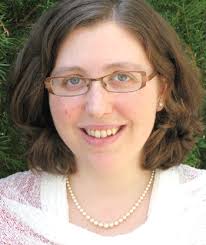Reading haftarah on Shabbat Chol HaMoed Pesach, we saw through the prophet Ezekiel’s eyes a valley full of dry bones (bikah meleah atzamot) declaring that their hope is gone (avdah tikvateinu). For a living human being, bearing witness to human mortality at vast scale is profoundly unsettling. These bones in earth show us where we come from and what will be our end, our fundamental essence as earth creatures alive in this world for but a breath of a moment. Standing over that valley, Ezekiel hears God’s voice: “Prophesy over these bones and say to them: O dry bones, hear the word of the Lord!” God promises: “I will put My breath into you and you shall live again, and I will set you upon your own soil.” The bones rise, flesh and life returning with breath from the Divine.
Ezekiel’s prophesy is one of the liberation stories that make up our Pesach canon, one expression of the journey from oppression to uplift that awakens the Jewish people to pursue liberation for ourselves and for others throughout the world, through thousands of years of our history. This story of dry bones returning to life is particularly resonant this week as we mark Yom HaAtzma’ut, the anniversary of the founding of the modern state of Israel. We celebrate the revival of the Hebrew language, returning to daily intercourse from generations of dormancy in scholarship; we note the return of Jewish self-governance in the land of Israel after thousands of years of rule by others; we mark the very survival of our people through the decimation of Shoah. To observe Yom HaAtzma’ut is to bear witness to dry bones rising.
This sense is present in the name of the day – atzma’ut, which we often translate as independence, is actually the act of being an entity (etzem); Yom HaAtzma’ut marks the day the State of Israel became an entity in the modern world, a nation among nations. Etzem is also the word for bone, a human metaphor for the most basic unit of identity. What is clear for those bones on the valley floor is clear for contemporary nations – the survival and thriving of each entity depends on the survival and thriving of all. A single bone of those valley skeletons would not stand on its own, would not receive the Divine breath of life. To truly celebrate Yom HaAtzma’ut requires the humility to recognize being an etzem, being an entity fundamentally earth-bound and mortal, linked to others, and waiting for Divine breath to bring life at every moment.
It is tempting after 69 years of development to say about an economically and culturally thriving State of Israel, “[Our] own power and the might of [our] own hands have won this wealth for [us]” (Deuteronomy 8:17); that is, to declare independence. In our time, the teaching from Deuteronomy is even more important for us to hear as a people than it was there on the steppes of Moav where Moshe spoke with us as we anticipated entering the land: Remember that all of this comes from the Divine.
The Biblical practice of yovel, releasing the land to its original owners every fifty years, is rooted in the notion that all of this is God’s: “The land must not be sold beyond reclaim, for the land is Mine; you are strangers and residents with Me” (Leviticus 25:23). Nahmanides understands this verse as a psychological principle that must apply to every land transaction: even though land would automatically remit after the fiftieth year, we must write into our contracts that sales are temporary in order to cultivate in ourselves the consciousness that our relationship to the land is always contingent, never taken for granted, as mortal as every human being. If we forget this, if the ever-temporary nature of our tenancy on the land becomes hard to accept, we also forget our core obligations to the land’s owner: to honor the Divine presence in every human being and to care for the earth.
Observing Yom HaAtzma’ut from a habit of yovel-consciousness, then, means taking note that our atzma’ut, our existence as an entity, is as fragile and as full of potential as Ezekiel’s valley of dry bones. Our life-breath depends on recognizing that our thriving is as linked to the thriving of our neighbors as the vertebrae of the human spine. From this place we can truly sing od lo avdah tikvateinu, our hope is not yet gone.
Rabbi Emma Kippley-Ogman, ordained by the Rabbinical School of Hebrew College, lives and works as a chaplain and teacher in St. Paul, MN. She partnered in creating T’ruah’s Yovel: A Sourcebook for Fifty Yearsand will be teaching more yovel at the National Havurah Committee Summer Institute this July. In a world that needs a longer view, she particularly appreciates the mystical notion of 50,000 year cosmic yovel cycles.

